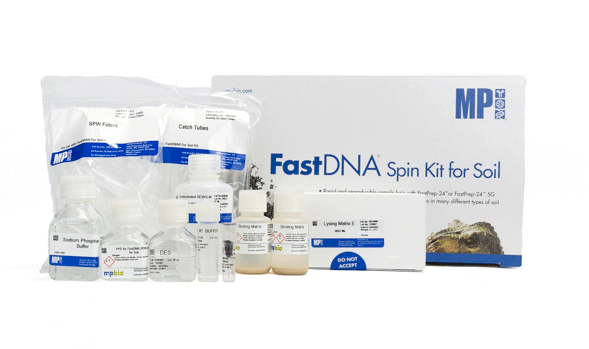Introduction
Environmental samples consist of both biotic and abiotic components, representing a diverse community of microbes, animals and plants. Environmental DNA (eDNA) is an increasingly valuable resource for exploring and monitoring aquatic ecosystems and studying biodiversity.
With aquatic samples being so diverse in both composition and turbidity, there are a multitude of approaches that can be used to extract DNA. Here we describe key methods—preprocessing, collection and extraction—to get high-quality DNA from your samples for downstream applications, such as next generation sequencing and metabarcoding.
Goals of Preprocessing, Collection and Extraction
- Rapid and reproducible sample lysis and DNA purification process
- No contamination from sample collection through DNA extraction
- High yield of quality nucleic acids—ready to use for environmental DNA sequencing
- Retained DNA integrity and size
Before You Start
It is important to note that prior to initiating collection and extraction, samples may need to be processed depending on the specific sample type and project goals. For example, marine sediment often contains large debris and may require filtering and washing through a mesh sieve, coffee filter, or gauze to avoid issues throughout the collection and extraction process.
Depending on your sample type and what you are evaluating, you may need to homogenize your sample to fully capture the eDNA present. Bead beating systems, such as MP Bio's FastPrep Instruments and MP Bio’s Lysing Matrix E, are effective for mechanical lysis and homogenization and are widely used to prepare environmental samples for DNA isolation from a myriad of sample types, including aquatic samples and marine sediment.
Collecting eDNA from Water Samples
There are three main methods for collecting eDNA from water samples: filtration, precipitation, and centrifugal ultrafiltration.
Filtration
This is the most commonly used method, largely because it facilitates large volume processing to obtain high eDNA yields. Pore size and filter material can significantly impact eDNA collection depending on the sample type. Most macroorganism eDNA are effectively captured using filters with pore sizes 1–10 μm, whereas microorganism eDNA may require pore sizes <1 μm. Samples with high turbidity and large debris can easily clog filters, so prefiltering may be necessary.
Typical materials and pore sizes:
- 0.45 μm cellulose nitrate
- 0.7 μm glass microfiber GF/F
- 1.2 μm glass microfiber
In most cases, eDNA capture on cellulose nitrate filters with an appropriate pore size (dependent on turbidity), followed by storage of filters in Longmire's buffer provides sufficient, high‐quality DNA. However, there is not a one‐size‐fits‐all method, and we recommend testing and optimizing protocols specific to your system to consistently obtain the eDNA you need. Kumar, Eble, and Gaither offer a guide for processing aquatic environmental DNA samples.
Precipitation
Precipitating DNA using isopropanol or ethanol is often used for water samples of small volume (e.g., 15 ml) and is ideal when the eDNA concentration of the species of interest is high. Because this method requires less equipment, it is ideal for scientists performing studies in difficult-to-access locations or in areas without electricity.
Centrifugal Ultrafiltration
This method is well-established for concentrating and purifying DNA, and it eliminates the need for additional reagents when collecting eDNA from water samples. This process involves recovering large DNA in the retentate, with smaller molecules and larger linearized DNA passing through the membrane and into the filtrate.
This is ideal for processing numerous samples with small to moderate volume, but can potentially be coupled with filtration methods discussed above for large sample volumes; this involves capturing the eDNA on the appropriate filter, resuspension in ultrapure water, and collection via ultrafiltration.
eDNA Extraction from Water Samples
DNA extraction and purification can be done with a commercial DNA extraction kit or with a liquid phase separation method (e.g., CTAB method). Commercial DNA extraction kits are more commonly used—likely due to better recovery, efficiency, and reproducibility—however numerous kits exist and the performance of each kit depends on the eDNA collection method and sample condition, such as the abundance of inhibitors.
When comparing various commercial DNA extraction kits, Eichmiller et al found that MP Bio’s FastDNATM SPIN Kit yielded the highest concentration of carp eDNA and was the most sensitive for eDNA detection. Similarly, Liu et al. showed that the FastDNATM SPIN Kit for Soil outperforms four other commercial kits in environmental DNA extraction of plankton communities from a freshwater reservoir.
Prior to Use
Before eDNA sequencing, measure the eDNA concentration and purity using a spectrophotometer. For tips and best practices on measuring the quantity and quality of extracted DNA, visit Nucleic Acid Extraction.
Pro Tips for Common Issues
- Clogged Filter:
- Homogenize and/or prefilter your sample
- Increase the number of filter replicates
- Sample Contamination:
- Use disposable filter holders to avoid insufficient cleaning
- Collect and preserve eDNA on Sterivex-GP capsule filters
- Wear gloves from sample collection through eDNA extraction
- Degraded DNA:
- Extract the eDNA from your sample as early as possible, ideally within 24 hours of sample collection
- Store the extracted DNA at -20°C until you are ready to conduct sequencing or other downstream applications
- If homogenizing your sample prior to collection, consider a less aggressive lysing matrix
- Lack of Reproducibility:
- Use an automated system, such as the MPure-12™, to minimize pipetting variability and ensure consistency between samples
- Troubleshoot and optimize the collection method
- For high throughput samples, utilize FastPrep-96 Soil/Microbe Kits, along with FastPrep-96 to get consistent reproducibility


